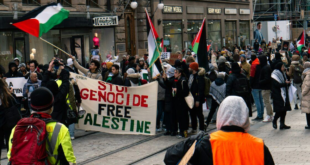CAMP ANACONDA (Reuters) — The US commander in Iraq, General David Petraeus, said on Monday it was too early to judge whether a Baghdad security crackdown was successful because the last of five extra brigades had yet to be deployed.
Earlier, US military spokesman Lieutenant-Colonel Christopher Garver said US and Iraqi troops controlled only about a third of the Iraqi capital.
US troops are dying at rates not seen for more than two years, almost four months after Washington began to send thousands more troops to Iraq in a last-ditch attempt to drag the country back from the brink of all-out sectarian civil war.
“You have not even seen the start of real operations,” Petraeus told reporters on the sidelines of a medal ceremony at a US air base near Balad, 80km north of Baghdad.
A military spokesman said earlier an extra 18,000 US troops, and many more Iraqi soldiers and police, had already been deployed since the start of the crackdown in the Iraqi capital in mid-February.
“The surge has not truly reached the full number on the ground. We still have an additional brigade just coming into Iraq,” said Petraeus.
He and the US ambassador to Iraq, Ryan Crocker, are due to give a progress report to President George W. Bush in September that Petraeus promised would be a “forthright snapshot” that would include their thoughts on various options.
“We would not be doing this if we did not think this was doable. This is a doable mission,” said Petraeus.
Bush won a bruising battle with a Democrat-controlled Congress for war funding but is under growing pressure, including from within his own Republican Party, to show progress in the unpopular war or start bringing troops home.
The crackdown in Baghdad and other areas is designed to buy time for Prime Minister Nouri Maliki’s government to meet a set of political targets set by Washington aimed at promoting national reconciliation.
Benchmarks
Â
The benchmarks, including a revenue-sharing oil law and constitutional reform, are meant to draw minority Sunni Arabs, dominant under Saddam Hussein, away from the insurgency and back into the political process alongside the majority Shiites.
The New York Times reported on Monday that according to an internal military assessment and local commanders, US and Iraqi troops “maintain physical influence over” 146 of Baghdad’s 457 neighbourhoods, with resistance still met in the other 311.
With Sunni Al Qaeda and the insurgents trying to derail the crackdown and wreck political progress, Bush and military leaders have warned that bloody months lie ahead.
“It’s going to get harder before it gets easier,” Garver said. “We know it’s going to be a tough fight over the summer.” Casualty figures bear out that assessment, with June already showing similar rates to May. Seventeen US soldiers were killed in the first three days of June.
May, when 127 were killed, was the third worst month for US troops since the invasion to topple Saddam in March 2003.
The worst months were November 2004 when 137 were killed and April the same year when 135 died.
“It is happening because we are going into areas where the enemy has sanctuaries,” said Petraeus.
“The enemy is not going to allow us to do that without a fight. They certainly are trying to ramp up their activities.” Garver said thousands more troops were moving out of bases into command outposts, known as joint security stations, leaving them more exposed to attack in the short term.
Tens of thousands of Iraqis have been killed in the same period. While there was a significant reduction in the number of targeted sectarian killings early on in the security crackdown, those numbers have risen again, with dozens of bodies being found in Baghdad almost every day.
“We got that number down and it just came back up. We are trying to push it down,” said Petraeus.
 Eurasia Press & News
Eurasia Press & News

